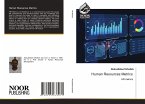- Gebundenes Buch
- Merkliste
- Auf die Merkliste
- Bewerten Bewerten
- Teilen
- Produkt teilen
- Produkterinnerung
- Produkterinnerung
This updated and practical guide will help you evaluate your company's safety and health processes and make fact-based decisions that improve overall performance. Written for professionals with limited exposure to statistics, Safety Metrics shows you how to assess trends and safety climates, work with data, and help with training.
Andere Kunden interessierten sich auch für
![Liquid Legal Liquid Legal]() Liquid Legal50,99 €
Liquid Legal50,99 €![Planning and Designing Effective Metrics Planning and Designing Effective Metrics]() Martin KlubeckPlanning and Designing Effective Metrics23,99 €
Martin KlubeckPlanning and Designing Effective Metrics23,99 €![Supply Chain Metrics That Matter Supply Chain Metrics That Matter]() Lora M. CecereSupply Chain Metrics That Matter67,99 €
Lora M. CecereSupply Chain Metrics That Matter67,99 €![On Time, in Full On Time, in Full]() Timothy McleanOn Time, in Full198,99 €
Timothy McleanOn Time, in Full198,99 €![Performance Evaluation Metrics for Information Systems Development: A Principal-agent Model Performance Evaluation Metrics for Information Systems Development: A Principal-agent Model]() Rajiv D. BankerPerformance Evaluation Metrics for Information Systems Development: A Principal-agent Model29,99 €
Rajiv D. BankerPerformance Evaluation Metrics for Information Systems Development: A Principal-agent Model29,99 €![Human Resources Metrics Human Resources Metrics]() Abduallateef GhallabHuman Resources Metrics25,99 €
Abduallateef GhallabHuman Resources Metrics25,99 €![Metrics Metrics]() Martin KlubeckMetrics47,99 €
Martin KlubeckMetrics47,99 €-
-
-
This updated and practical guide will help you evaluate your company's safety and health processes and make fact-based decisions that improve overall performance. Written for professionals with limited exposure to statistics, Safety Metrics shows you how to assess trends and safety climates, work with data, and help with training.
Hinweis: Dieser Artikel kann nur an eine deutsche Lieferadresse ausgeliefert werden.
Hinweis: Dieser Artikel kann nur an eine deutsche Lieferadresse ausgeliefert werden.
Produktdetails
- Produktdetails
- Verlag: Rowman & Littlefield
- Seitenzahl: 238
- Erscheinungstermin: 30. April 2025
- Englisch
- Abmessung: 254mm x 178mm
- ISBN-13: 9798892050753
- Artikelnr.: 72700371
- Herstellerkennzeichnung
- Libri GmbH
- Europaallee 1
- 36244 Bad Hersfeld
- gpsr@libri.de
- Verlag: Rowman & Littlefield
- Seitenzahl: 238
- Erscheinungstermin: 30. April 2025
- Englisch
- Abmessung: 254mm x 178mm
- ISBN-13: 9798892050753
- Artikelnr.: 72700371
- Herstellerkennzeichnung
- Libri GmbH
- Europaallee 1
- 36244 Bad Hersfeld
- gpsr@libri.de
By Dr. Christopher A. Janicak
Table of Contents
1. Introduction
Current trends in Safety Performance Measurement
Managing Safety Performance
Summary
Chapter Questions
2.Defining the Leadership Structure
Leadership
Accountability
Collaborative Process
Organizational Mission Statement
Resources and Documentation
Summary
Chapter Questions
3. Safety Goals, Performance Objectives, and Benchmarking
Establishing Effective Goals
Establishing Effective Safety Performance Objectives
Safety Performance Objectives
Management by Objectives
The Balanced Scorecard Approach
Benchmarking
Defining Safety Benchmarks
Benchmarking Pitfalls
Summary
Chapter Questions
4. Defining Key Performance Indicators and Safety Metrics
Defining Organizational Processes
Measurement
Safety Key Performance Indicators (KPIs)
Tying Performance Indicators to Goals and Objectives
Using Root Cause Analysis to Identify KPIs
Benefits of KPIs
Safety Metrics
Linking Safety Metrics to Performance Indicators
Summary
Chapter Questions
5. The Focus on Leading Indicators
Leading Indicators and Safety Performance
Relationships between Leading Indicators and Safety Performance
Developing Leading Indicators
Summary
Chapter Questions
6. Employee Accident and Injury Performance Measures
Employee Accident and Injury Leading Indicator Performance Indicators
Employee Accident and Injury Leading Indicator Performance Metrics
Employee Accident and Injury Trailing Performance Indicators
Employee Accident and Injury Trailing Performance Metrics
OSHA Based Incidence Rates
Bureau of Labor Statistics' Occupational Safety and Health Statistics
Workers' Compensation Trailing Indicator Metrics
Workers' Compensation Disability Loss Metrics
Summary
Chapter Questions
7. Liability Safety Metrics
Leading Liability Performance Indicators
Leading Liability Indicator Metrics
Lagging Liability Performance Indicators
Lagging Liability Indicator Metrics
Summary
Chapter Questions
8.Property Loss Metrics
Covered Perils
Leading Property Loss and Crime Loss Performance Indicators
Leading Property Loss and Crime Loss Performance Indicator Metrics
Lagging Property Loss and Crime Loss Performance Indicators
Lagging Property and Crime KPIs Metrics
Summary
Chapter Questions
9. Behavior Based Safety Metrics
Behavior Based Safety Process
Individual Behavior and BBS
Objectives of Measuring Safety Performance
Critical Behaviors
Seven Factors Critical to BBS Success
Behavior-based Safety Performance Objectives
Behavior-based Safety Process Metrics
Summary
Chapter Questions
10. Safety Training Performance Metrics
Formative Evaluation
Summative Evaluation
Quantitative and Qualitative Evaluation
Objectives-Oriented Evaluation
Evaluating Web Based Training
Improving Training Effectiveness
Summary
Chapter Questions
11. Fleet Safety Metrics
Leading Causes of Motor Vehicle Accidents
Vehicle Telematics Performance Indicators
Fleet Safety Performance Leading Indicators
Fleet Safety Performance Lagging Indicator Metrics
Fleet Accident Lagging Indicator Metrics
Summary
Chapter Questions
12.Data Collection and Auditing Safety Performance
Data Collection
Task Analyses
Auditing
Constructing Audits
Liking Audits to Performance Measures
The Audit Process
Potential Problems with Audits
Benefits of Audits
Assessing the Safety Culture
Systems Safety Techniques
Summary
Chapter Questions
13. Statistical Methods in Safety Metrics
Data Formats
Recoding Data
Strength of the Data Formats
Descriptive Statistics
Measures of Central Tendency
Measures of Variability
The Normal Distribution
Probability
Practical Applications for Descriptive Statistics and Probabilities
Summary
Chapter Questions
14.Charting Safety Performance Measures
Run Charts
Control Charts
Attribute Control Charts
Variable Control Charts
Pareto Charts
Cause and Effect Analysis
Six Sigma Capability Index
Summary
Chapter Questions
15. Trending and Forecasting
Correlations
Regression
Summary
Chapter Questions
16. Effective Data Presentation
Scatterplots
Histograms
Line Charts
Tables
Bar Charts
Pie Charts
Summary
Chapter Questions
17. Implementing the Safety Performance Program
Select a Management Framework
Utilize the Continuous Improvement Process
Planning Phase
Doing Phase
Check Phase
Act Phase
Summary
Chapter Questions
Glossary
References
Appendix A: Solutions to Chapter Questions
Appendix B: National and Consensus Standards
1. Introduction
Current trends in Safety Performance Measurement
Managing Safety Performance
Summary
Chapter Questions
2.Defining the Leadership Structure
Leadership
Accountability
Collaborative Process
Organizational Mission Statement
Resources and Documentation
Summary
Chapter Questions
3. Safety Goals, Performance Objectives, and Benchmarking
Establishing Effective Goals
Establishing Effective Safety Performance Objectives
Safety Performance Objectives
Management by Objectives
The Balanced Scorecard Approach
Benchmarking
Defining Safety Benchmarks
Benchmarking Pitfalls
Summary
Chapter Questions
4. Defining Key Performance Indicators and Safety Metrics
Defining Organizational Processes
Measurement
Safety Key Performance Indicators (KPIs)
Tying Performance Indicators to Goals and Objectives
Using Root Cause Analysis to Identify KPIs
Benefits of KPIs
Safety Metrics
Linking Safety Metrics to Performance Indicators
Summary
Chapter Questions
5. The Focus on Leading Indicators
Leading Indicators and Safety Performance
Relationships between Leading Indicators and Safety Performance
Developing Leading Indicators
Summary
Chapter Questions
6. Employee Accident and Injury Performance Measures
Employee Accident and Injury Leading Indicator Performance Indicators
Employee Accident and Injury Leading Indicator Performance Metrics
Employee Accident and Injury Trailing Performance Indicators
Employee Accident and Injury Trailing Performance Metrics
OSHA Based Incidence Rates
Bureau of Labor Statistics' Occupational Safety and Health Statistics
Workers' Compensation Trailing Indicator Metrics
Workers' Compensation Disability Loss Metrics
Summary
Chapter Questions
7. Liability Safety Metrics
Leading Liability Performance Indicators
Leading Liability Indicator Metrics
Lagging Liability Performance Indicators
Lagging Liability Indicator Metrics
Summary
Chapter Questions
8.Property Loss Metrics
Covered Perils
Leading Property Loss and Crime Loss Performance Indicators
Leading Property Loss and Crime Loss Performance Indicator Metrics
Lagging Property Loss and Crime Loss Performance Indicators
Lagging Property and Crime KPIs Metrics
Summary
Chapter Questions
9. Behavior Based Safety Metrics
Behavior Based Safety Process
Individual Behavior and BBS
Objectives of Measuring Safety Performance
Critical Behaviors
Seven Factors Critical to BBS Success
Behavior-based Safety Performance Objectives
Behavior-based Safety Process Metrics
Summary
Chapter Questions
10. Safety Training Performance Metrics
Formative Evaluation
Summative Evaluation
Quantitative and Qualitative Evaluation
Objectives-Oriented Evaluation
Evaluating Web Based Training
Improving Training Effectiveness
Summary
Chapter Questions
11. Fleet Safety Metrics
Leading Causes of Motor Vehicle Accidents
Vehicle Telematics Performance Indicators
Fleet Safety Performance Leading Indicators
Fleet Safety Performance Lagging Indicator Metrics
Fleet Accident Lagging Indicator Metrics
Summary
Chapter Questions
12.Data Collection and Auditing Safety Performance
Data Collection
Task Analyses
Auditing
Constructing Audits
Liking Audits to Performance Measures
The Audit Process
Potential Problems with Audits
Benefits of Audits
Assessing the Safety Culture
Systems Safety Techniques
Summary
Chapter Questions
13. Statistical Methods in Safety Metrics
Data Formats
Recoding Data
Strength of the Data Formats
Descriptive Statistics
Measures of Central Tendency
Measures of Variability
The Normal Distribution
Probability
Practical Applications for Descriptive Statistics and Probabilities
Summary
Chapter Questions
14.Charting Safety Performance Measures
Run Charts
Control Charts
Attribute Control Charts
Variable Control Charts
Pareto Charts
Cause and Effect Analysis
Six Sigma Capability Index
Summary
Chapter Questions
15. Trending and Forecasting
Correlations
Regression
Summary
Chapter Questions
16. Effective Data Presentation
Scatterplots
Histograms
Line Charts
Tables
Bar Charts
Pie Charts
Summary
Chapter Questions
17. Implementing the Safety Performance Program
Select a Management Framework
Utilize the Continuous Improvement Process
Planning Phase
Doing Phase
Check Phase
Act Phase
Summary
Chapter Questions
Glossary
References
Appendix A: Solutions to Chapter Questions
Appendix B: National and Consensus Standards
Table of Contents
1. Introduction
Current trends in Safety Performance Measurement
Managing Safety Performance
Summary
Chapter Questions
2.Defining the Leadership Structure
Leadership
Accountability
Collaborative Process
Organizational Mission Statement
Resources and Documentation
Summary
Chapter Questions
3. Safety Goals, Performance Objectives, and Benchmarking
Establishing Effective Goals
Establishing Effective Safety Performance Objectives
Safety Performance Objectives
Management by Objectives
The Balanced Scorecard Approach
Benchmarking
Defining Safety Benchmarks
Benchmarking Pitfalls
Summary
Chapter Questions
4. Defining Key Performance Indicators and Safety Metrics
Defining Organizational Processes
Measurement
Safety Key Performance Indicators (KPIs)
Tying Performance Indicators to Goals and Objectives
Using Root Cause Analysis to Identify KPIs
Benefits of KPIs
Safety Metrics
Linking Safety Metrics to Performance Indicators
Summary
Chapter Questions
5. The Focus on Leading Indicators
Leading Indicators and Safety Performance
Relationships between Leading Indicators and Safety Performance
Developing Leading Indicators
Summary
Chapter Questions
6. Employee Accident and Injury Performance Measures
Employee Accident and Injury Leading Indicator Performance Indicators
Employee Accident and Injury Leading Indicator Performance Metrics
Employee Accident and Injury Trailing Performance Indicators
Employee Accident and Injury Trailing Performance Metrics
OSHA Based Incidence Rates
Bureau of Labor Statistics' Occupational Safety and Health Statistics
Workers' Compensation Trailing Indicator Metrics
Workers' Compensation Disability Loss Metrics
Summary
Chapter Questions
7. Liability Safety Metrics
Leading Liability Performance Indicators
Leading Liability Indicator Metrics
Lagging Liability Performance Indicators
Lagging Liability Indicator Metrics
Summary
Chapter Questions
8.Property Loss Metrics
Covered Perils
Leading Property Loss and Crime Loss Performance Indicators
Leading Property Loss and Crime Loss Performance Indicator Metrics
Lagging Property Loss and Crime Loss Performance Indicators
Lagging Property and Crime KPIs Metrics
Summary
Chapter Questions
9. Behavior Based Safety Metrics
Behavior Based Safety Process
Individual Behavior and BBS
Objectives of Measuring Safety Performance
Critical Behaviors
Seven Factors Critical to BBS Success
Behavior-based Safety Performance Objectives
Behavior-based Safety Process Metrics
Summary
Chapter Questions
10. Safety Training Performance Metrics
Formative Evaluation
Summative Evaluation
Quantitative and Qualitative Evaluation
Objectives-Oriented Evaluation
Evaluating Web Based Training
Improving Training Effectiveness
Summary
Chapter Questions
11. Fleet Safety Metrics
Leading Causes of Motor Vehicle Accidents
Vehicle Telematics Performance Indicators
Fleet Safety Performance Leading Indicators
Fleet Safety Performance Lagging Indicator Metrics
Fleet Accident Lagging Indicator Metrics
Summary
Chapter Questions
12.Data Collection and Auditing Safety Performance
Data Collection
Task Analyses
Auditing
Constructing Audits
Liking Audits to Performance Measures
The Audit Process
Potential Problems with Audits
Benefits of Audits
Assessing the Safety Culture
Systems Safety Techniques
Summary
Chapter Questions
13. Statistical Methods in Safety Metrics
Data Formats
Recoding Data
Strength of the Data Formats
Descriptive Statistics
Measures of Central Tendency
Measures of Variability
The Normal Distribution
Probability
Practical Applications for Descriptive Statistics and Probabilities
Summary
Chapter Questions
14.Charting Safety Performance Measures
Run Charts
Control Charts
Attribute Control Charts
Variable Control Charts
Pareto Charts
Cause and Effect Analysis
Six Sigma Capability Index
Summary
Chapter Questions
15. Trending and Forecasting
Correlations
Regression
Summary
Chapter Questions
16. Effective Data Presentation
Scatterplots
Histograms
Line Charts
Tables
Bar Charts
Pie Charts
Summary
Chapter Questions
17. Implementing the Safety Performance Program
Select a Management Framework
Utilize the Continuous Improvement Process
Planning Phase
Doing Phase
Check Phase
Act Phase
Summary
Chapter Questions
Glossary
References
Appendix A: Solutions to Chapter Questions
Appendix B: National and Consensus Standards
1. Introduction
Current trends in Safety Performance Measurement
Managing Safety Performance
Summary
Chapter Questions
2.Defining the Leadership Structure
Leadership
Accountability
Collaborative Process
Organizational Mission Statement
Resources and Documentation
Summary
Chapter Questions
3. Safety Goals, Performance Objectives, and Benchmarking
Establishing Effective Goals
Establishing Effective Safety Performance Objectives
Safety Performance Objectives
Management by Objectives
The Balanced Scorecard Approach
Benchmarking
Defining Safety Benchmarks
Benchmarking Pitfalls
Summary
Chapter Questions
4. Defining Key Performance Indicators and Safety Metrics
Defining Organizational Processes
Measurement
Safety Key Performance Indicators (KPIs)
Tying Performance Indicators to Goals and Objectives
Using Root Cause Analysis to Identify KPIs
Benefits of KPIs
Safety Metrics
Linking Safety Metrics to Performance Indicators
Summary
Chapter Questions
5. The Focus on Leading Indicators
Leading Indicators and Safety Performance
Relationships between Leading Indicators and Safety Performance
Developing Leading Indicators
Summary
Chapter Questions
6. Employee Accident and Injury Performance Measures
Employee Accident and Injury Leading Indicator Performance Indicators
Employee Accident and Injury Leading Indicator Performance Metrics
Employee Accident and Injury Trailing Performance Indicators
Employee Accident and Injury Trailing Performance Metrics
OSHA Based Incidence Rates
Bureau of Labor Statistics' Occupational Safety and Health Statistics
Workers' Compensation Trailing Indicator Metrics
Workers' Compensation Disability Loss Metrics
Summary
Chapter Questions
7. Liability Safety Metrics
Leading Liability Performance Indicators
Leading Liability Indicator Metrics
Lagging Liability Performance Indicators
Lagging Liability Indicator Metrics
Summary
Chapter Questions
8.Property Loss Metrics
Covered Perils
Leading Property Loss and Crime Loss Performance Indicators
Leading Property Loss and Crime Loss Performance Indicator Metrics
Lagging Property Loss and Crime Loss Performance Indicators
Lagging Property and Crime KPIs Metrics
Summary
Chapter Questions
9. Behavior Based Safety Metrics
Behavior Based Safety Process
Individual Behavior and BBS
Objectives of Measuring Safety Performance
Critical Behaviors
Seven Factors Critical to BBS Success
Behavior-based Safety Performance Objectives
Behavior-based Safety Process Metrics
Summary
Chapter Questions
10. Safety Training Performance Metrics
Formative Evaluation
Summative Evaluation
Quantitative and Qualitative Evaluation
Objectives-Oriented Evaluation
Evaluating Web Based Training
Improving Training Effectiveness
Summary
Chapter Questions
11. Fleet Safety Metrics
Leading Causes of Motor Vehicle Accidents
Vehicle Telematics Performance Indicators
Fleet Safety Performance Leading Indicators
Fleet Safety Performance Lagging Indicator Metrics
Fleet Accident Lagging Indicator Metrics
Summary
Chapter Questions
12.Data Collection and Auditing Safety Performance
Data Collection
Task Analyses
Auditing
Constructing Audits
Liking Audits to Performance Measures
The Audit Process
Potential Problems with Audits
Benefits of Audits
Assessing the Safety Culture
Systems Safety Techniques
Summary
Chapter Questions
13. Statistical Methods in Safety Metrics
Data Formats
Recoding Data
Strength of the Data Formats
Descriptive Statistics
Measures of Central Tendency
Measures of Variability
The Normal Distribution
Probability
Practical Applications for Descriptive Statistics and Probabilities
Summary
Chapter Questions
14.Charting Safety Performance Measures
Run Charts
Control Charts
Attribute Control Charts
Variable Control Charts
Pareto Charts
Cause and Effect Analysis
Six Sigma Capability Index
Summary
Chapter Questions
15. Trending and Forecasting
Correlations
Regression
Summary
Chapter Questions
16. Effective Data Presentation
Scatterplots
Histograms
Line Charts
Tables
Bar Charts
Pie Charts
Summary
Chapter Questions
17. Implementing the Safety Performance Program
Select a Management Framework
Utilize the Continuous Improvement Process
Planning Phase
Doing Phase
Check Phase
Act Phase
Summary
Chapter Questions
Glossary
References
Appendix A: Solutions to Chapter Questions
Appendix B: National and Consensus Standards








